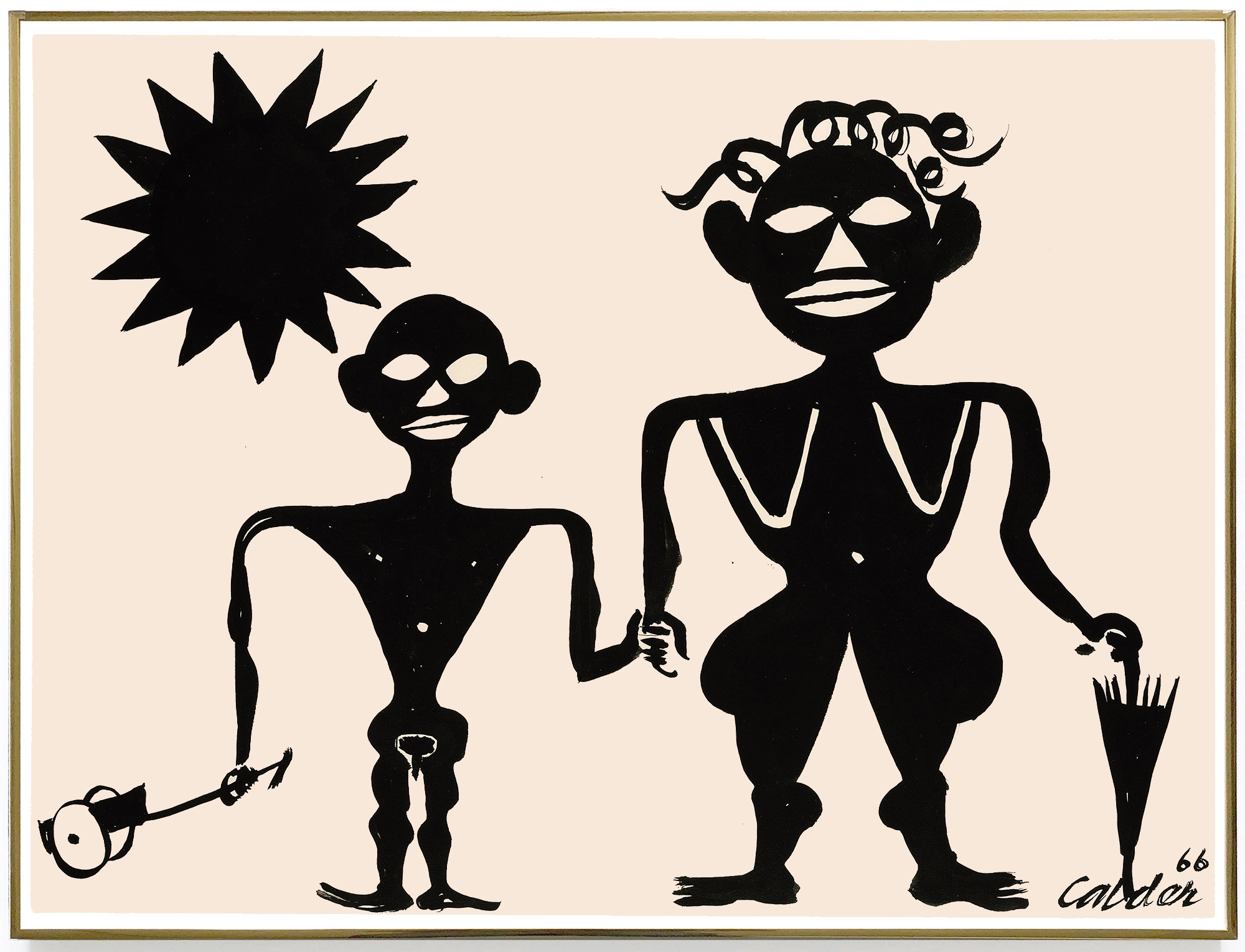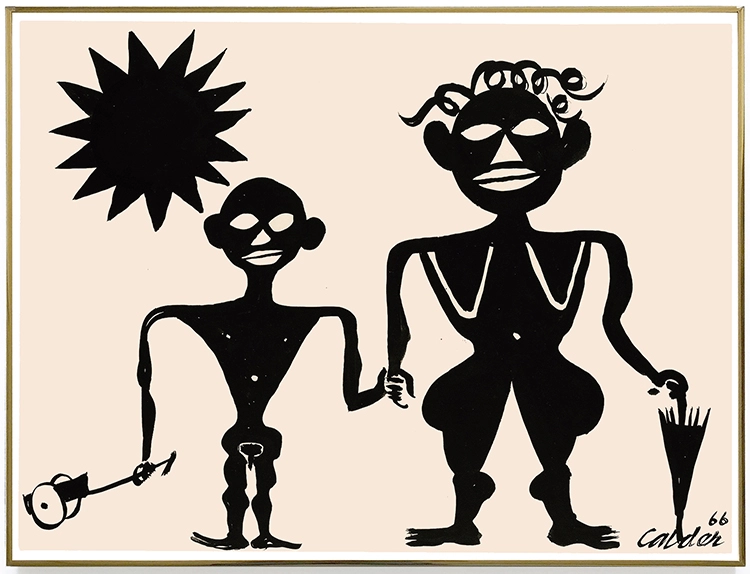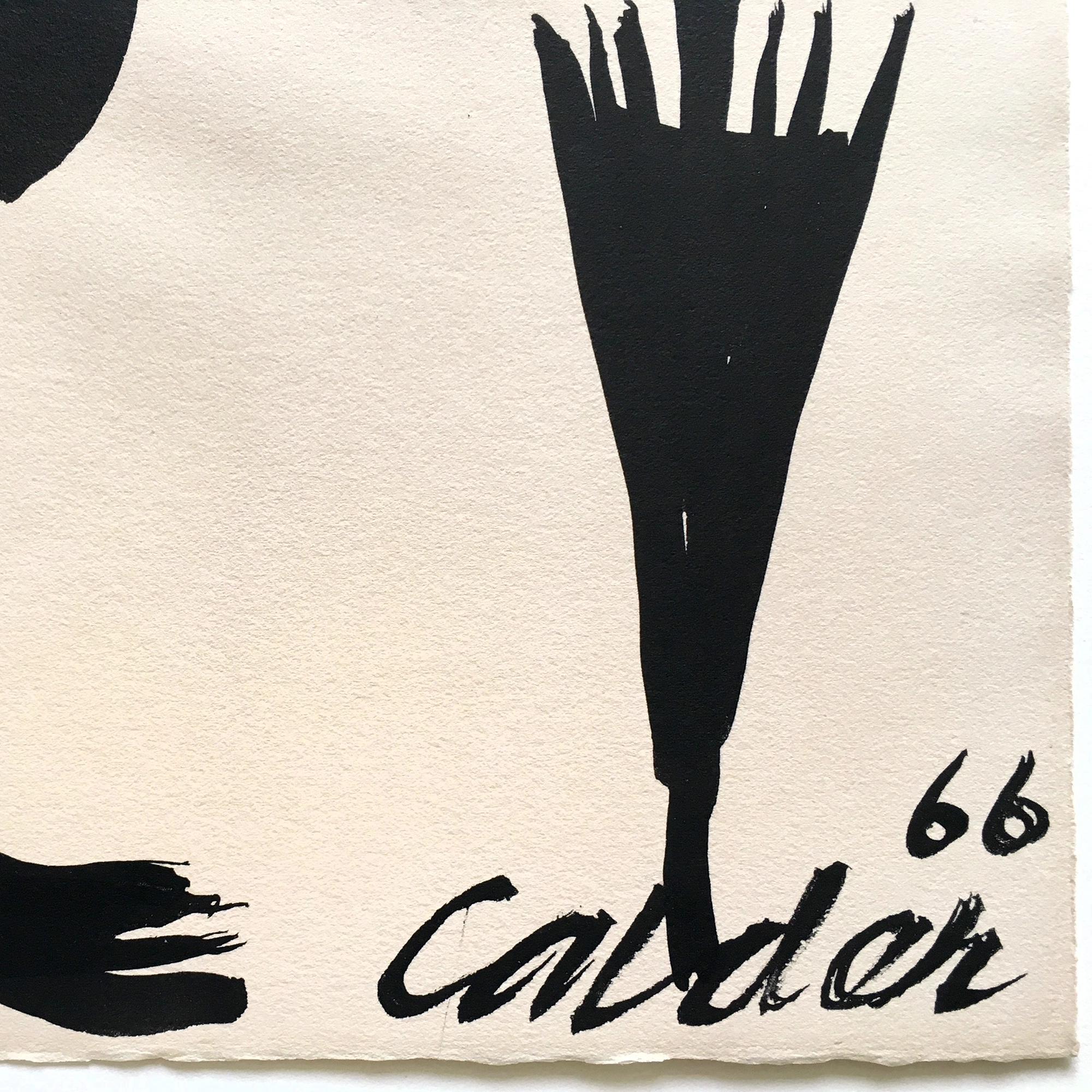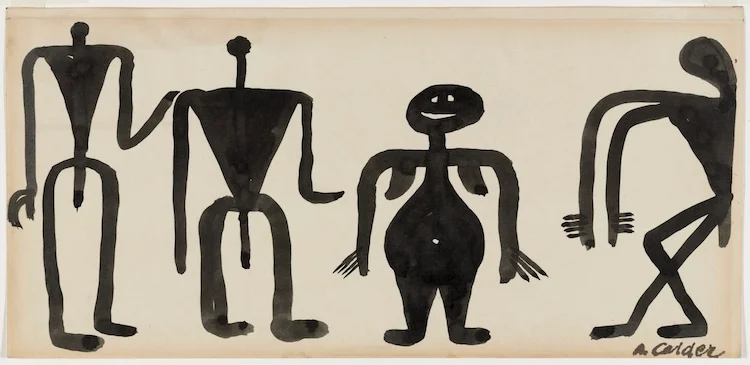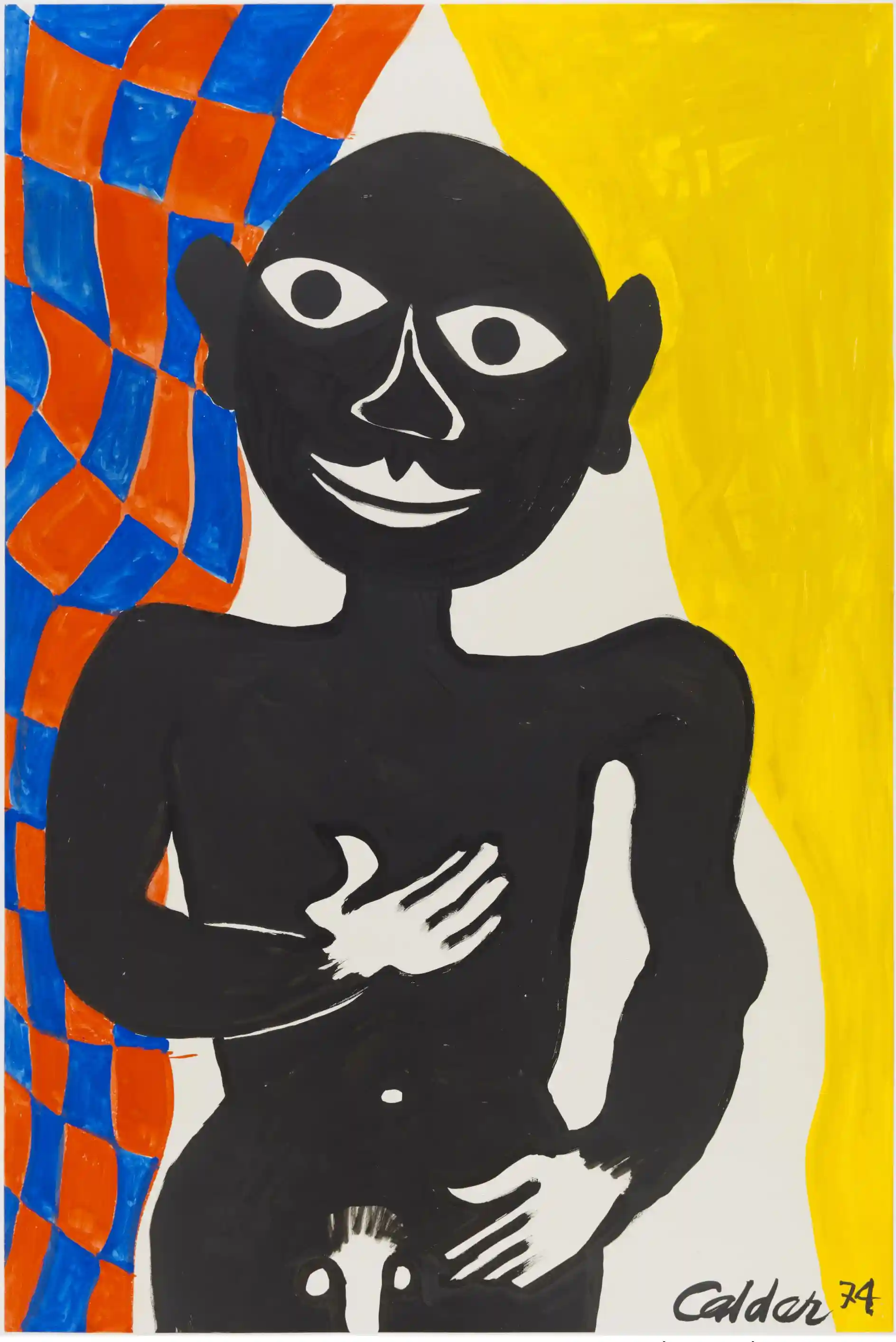Alexander Calder
African Scene, 1966
ink on paper
paper: 22 7/8 x 30 3/4 inches
frame: 24 x 32 inches
signed and dated lower right 'Calder 66'
With Perls Galleries label No. 7747 verso
This work is registered in the archives of the Calder Foundation, New York, under application number A05112.
paper: 22 7/8 x 30 3/4 inches
frame: 24 x 32 inches
signed and dated lower right 'Calder 66'
With Perls Galleries label No. 7747 verso
This work is registered in the archives of the Calder Foundation, New York, under application number A05112.
Provenance
Perls Galleries, New York
Louise Ferrari, Houston
Private collection, Houston
Anon. sale; Christie's, New York,November 9, 1979, Lot 22
The Arthur and Anita Kahn Collection: A New York Story, Christie's, New York, August 14, 2015, Lot 160
Private Collection, New York
